Perth Hills Armadale Visitor Centre
18 September 2019
The news that tulips come in different colours is probably not news to you. If it is, you need a visit to Araluen during spring season stat. But think about it for a second, have you ever actually seen a pure blue tulip? I mean, really blue, not just the lilac shade with a name that’s slightly suggestive of the sky.
The answer is probably not, and for good reason because blue is an all-round rare colour in plants, with less than 10% of the varieties in the world appearing blue. Appearing blue for plants is pretty hard. Plants cannot produce the chemical required for the blue colour, so they have to trick the eyes with the pigments they can produce.
There are two major classes of pigments involved in flower colour - carotenoids and flavonoids. Both are also found in fruits and vegetables and give them their colour too. For plants to appear blue, they need to be a bit sneaky and use these carotenoids and flavonoids to make something that appears completely unlike the starting ingredients.
There are a few ways to modify the flavonoid pigment to appear blue, for example changing the acidity of the insides of tulip flower cells, using a co-pigment or creating a mixture of pigment and metal ions, but tulips are (as of yet) are unable to do any of these and genetically modifying tulips results in other issues like toxic flowers. This is similar to why roses don’t come in blue either.
TLDR: blue hard like Masterchef grand final hard
But, never fear if you want to see some beautiful flowers and wildflowers in an array of amazing colours, then here are our top spots where you can find the best flowers in Perth Hills Armadale.
1. Araluen Botanic Park
You can’t really beat the mass plantings of tulips for a reminder of everything that makes spring great. The diversity of colour is something to behold with seas of yellow, red and purple found throughout the park. However, the park isn’t solely devoted to tulip flowering with displays of hyacinths, daffodils and ranunculus putting on a show too.
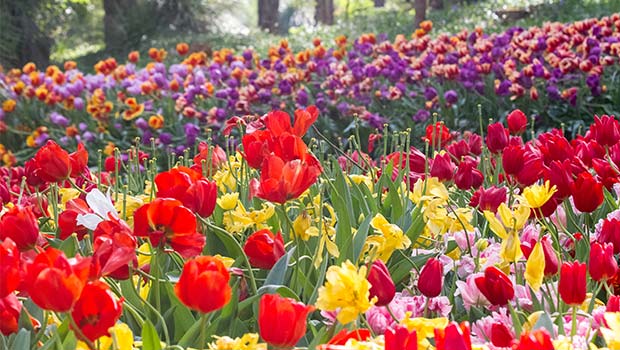
Araluen Botanic Park
362 Croyden Road, Roleystone
Admission Fees:
Adults $15
Child (6-15 years) $7
Concession $12
2. Patsy Durack's Rose Garden
Also known as Old Archbishop’s House, this property has over 600 rose bushes to delight the eyes and the nose. There’s a wide variety of colours here from pale peachy-yellow blooms through to vibrant red and all sorts of shades in-between. Devonshire teas are available for purchase so why not spend an afternoon smelling the roses and relaxing on the veranda? If you’re thinking of visiting as a group, Patsy herself can give you a talk about the amazing history of the gardens and answer any of your rose gardening questions. Part proceeds of the entry fee go to the Cancer Council of WA.
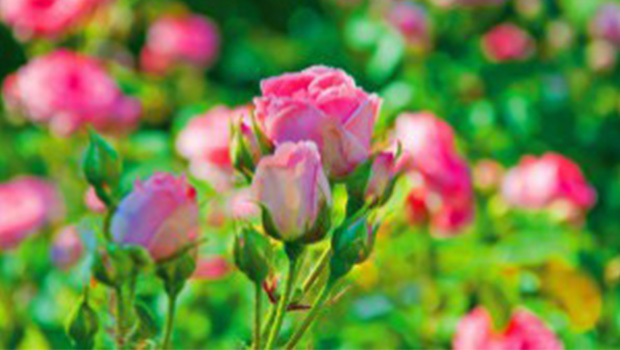
Gardens open for viewing October, November, December and March, April, May.
Sundays: 10am to 4.30pm
Monday - Saturday: By appointment for tours and groups
Patsy Durack's Rose Garden:
33 Parke Road, Gooseberry Hill
If you’re craving some real blues you can’t beat our wildflower natives, after all they’ve had plenty of time to perfect it! Our recommended spots and species to look for are:
3. Bungendore Park
Home to many beautiful wildflowers and complex topography, Bungendore Park is a great spot for a bushwalk through varying Jarrah and Jarrah-Marri forests, with some small areas of Wandoo-Marri woodland.
In addition to the flowers, Red-tailed Black Cockatoos are common to the area adding to the natural soundscape of the park. There are marked trails of between two and four kilometres, so pop into the Perth Hills Armadale Visitor Centre for a map and a copy of Milkmaids and Running Postmen the guide to plants found in Bungendore Park.
Free entry (dogs allowed).
Bungendore Park:
Dryandra Drive (off Albany Highway), Bedfordale
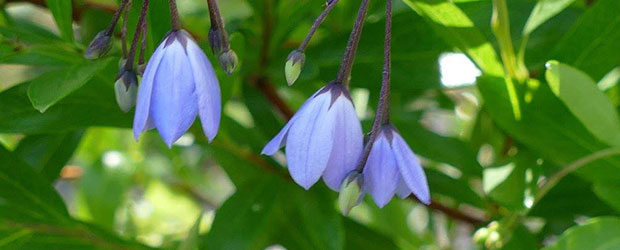
Photo credit FB@BungendorePark
Look out for:
Blue Lady Orchid, Thelymitra crinite
Australian Bluebell, Billardiera heterophylla
4. Armadale Settlers Common
At last count Armadale Settlers Common had 318 recorded plant species, including a splendid variety of wildflowers. The ‘Common’ is a great place to visit year round but particularly comes alive in spring. There are a number of trails through the common for all levels of difficulty including the 1km Golden Whistler Trail, located in the east side of the Common, suitable for wheelchairs and prams. For more adventurous walkers, maps are available from the Perth Hills Armadale Visitor Centre to help you plan a longer adventure.
Free entry (dogs allowed).
Armadale Settlers Common:
Observation Circle, Bedfordale (for accessible trail and Settlers Common East).
Triton Crescent off Albany Highway, Bedfordale for other trails.
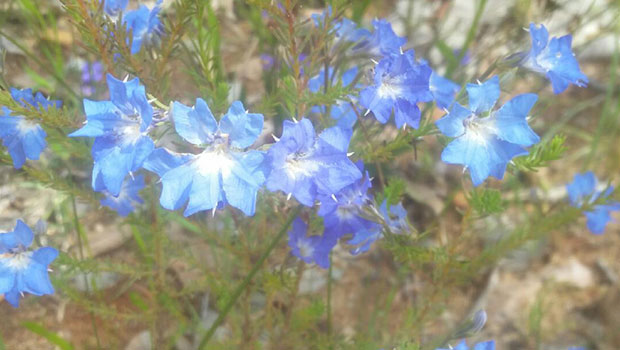
Look out for: Blue Leschenaultia, Lechenaultia biloba
5. Ellis Brook Valley
Widely considered the best place to catch wildflowers in the Perth metropolitan region, this biodiversity hotspot also boasts amazing views from the top of the waterfall.60 Foot Falls doesn’t flow for all of the year, slowing to a trickle or stopping in warmer months, but making the rocks at the top the perfect spot for a picnic overlooking Perth.
The reserve has more than 550 wildflower species and four different walk trails to choose from if the steep path to the top of the falls isn’t your thing. You may also catch a glimpse of the beautiful Splendid Fairy Wren among the 116 bird species recorded in the valley (they’ve been seen nesting along the brook).
Free entry (dogs allowed).
Ellis Brook Valley:
Rushton Road, Martin
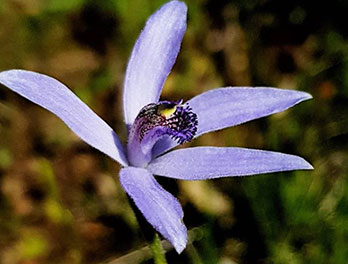
Photo credit IG@huntingorchids
Look out for: Blue Fairy Orchid aka blue beard, Caladenia deformis
Guided wildflower walks
If you’d like to learn more about our region’s amazing variety of flowers and don’t know where to start a wildflower walk is a great beginning. The Wildflower Society of WA has guided walks happening right through Spring into Armadale with knowledgeable guides on hand to help with identification of the beauties you uncover. 2019’s dates are:
12 September (7.30 to 8.30pm) Lake Forrestdale Nature Reserve $3
15 September (8.30am to noon) Lloyd Hughes Park, Kelmscott
28 September (11am to 12.30pm) Bungendore Park
13 October (8.30 to noon) Fletcher Park and Lambert Lane Reserves
For more information please visit the Wildflower Society of WA’s Armadale Branch webpage.

